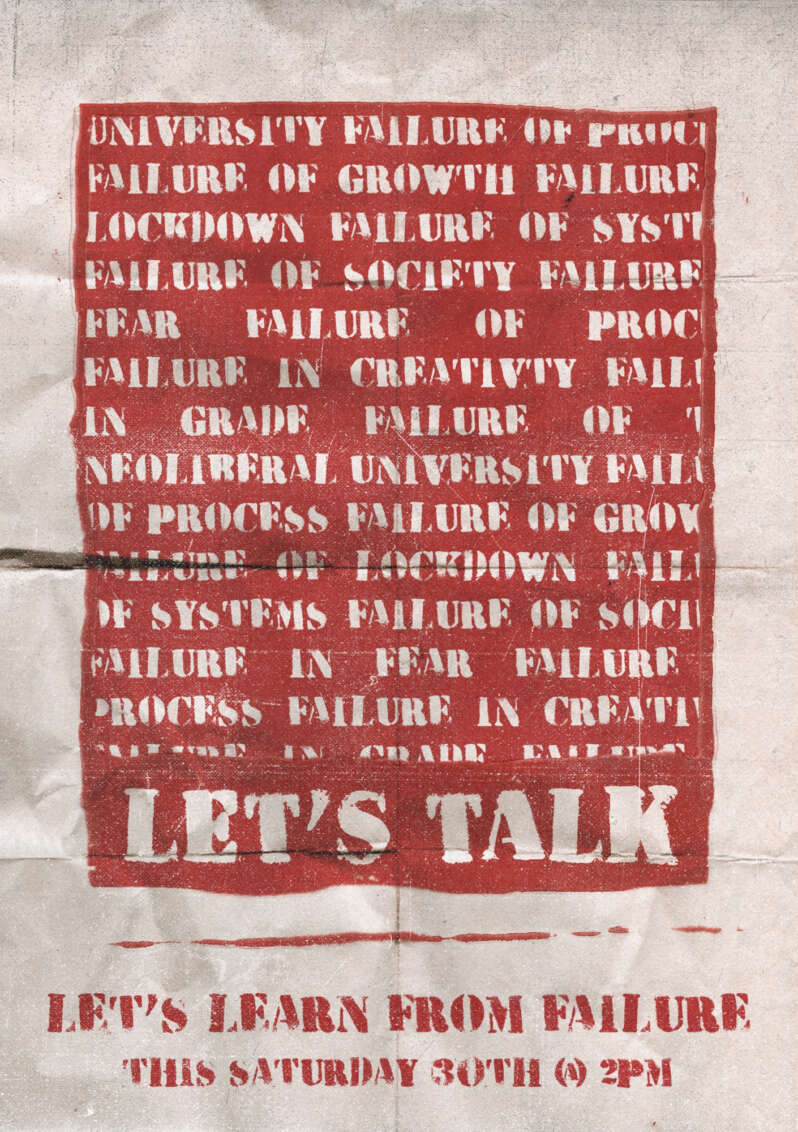Fall, Failure, Fellowship: actions and architecture in emancipated pedagogy

Architectural education is eking by with the scraps left by the university. The blanket approach of the neoliberal university has reduced creative learning spaces and resources while the existing and its students are regulated. The institution is failing.
What is there to do, but pin up?
Lest we fail.
Let’s fail.
Seeking not to replace the system, but to offer insight towards other modalities of learning and practice. This thesis utilises a speculative design approach, participatory live projects and the video medium in addressing the School of Architecture as a study of wider university issues. Failure is transformed into an exploration of practice rather than a destination.























